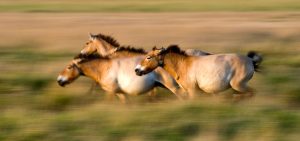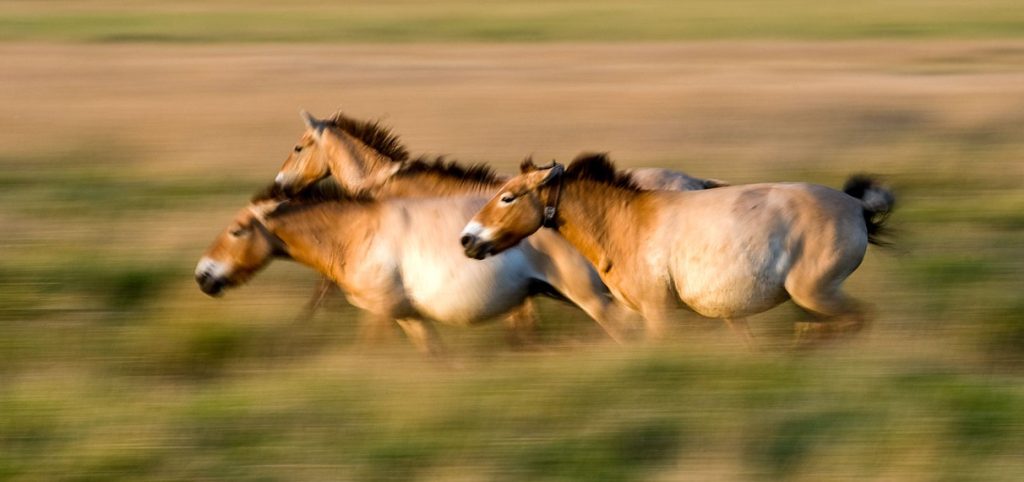
Horses that once inhabited the Northern Plains disappeared around 13,000 years ago—thousands of years before their reintroduction by Europeans
STURGIS, S.D. – Horses that once galloped across South Dakota and the Northern Plains were part of complex migration patterns between North America and Asia, according to groundbreaking research published in Science.
The study, led by Yvette Running Horse Collin and an international team of scientists, analyzed DNA from ancient horse fossils to reveal that North American and Asian horse populations maintained genetic connections between 50,000 and 13,000 years ago.
“Horses evolved in North America and traveled across Beringia, where they further speciated and expanded their ranges,” according to the researchers. Late Pleistocene climate changes eventually disrupted this migration route, leading to the extinction of horses on their native continent.
The research combined Indigenous and Western scientific methods, including genomics and isotope profiling of fossils from across Beringia.
This discovery helps explain the evolutionary history of horses that once inhabited the Northern Plains before disappearing around 13,000 years ago—thousands of years before their reintroduction by Europeans.
“Understanding how such losses of connectivity have affected species in the past should shape our efforts to maintain species into the future,” noted study co-author Sacha Vignieri.
The researchers found that Late Pleistocene horses from Alaska and northern Yukon were genetically related to populations from Eurasia. These horses crossed the Bering land bridge repeatedly during glacial periods when sea levels were lower, creating an ice-free corridor.
The study revealed distinct lineages north and south of the American ice sheets. Climate warming around 13,000 years ago restricted mobility and food availability, contributing to population decline.
Climate data from the study shows significant environmental changes during this period, with isotope analyses revealing shifts in plant communities that affected horse diets and migration patterns.
Dr. Clément Bataille, one of the corresponding authors, explained the significance: “As climate warmed and horses entered the ice-free corridor connecting Beringia and midcontinental America, restricted mobility and food availability impeded population growth.”
This research provides context for understanding South Dakota’s paleontological record, which includes various Ice Age mammals that shared ecosystems with these ancient horses.
The study also has implications for modern conservation efforts. As researchers noted, “Our combined Western and Indigenous framework offers critical guidance for wildlife conservation amid ongoing climate change.”
While modern horses were later reintroduced to North America by Europeans, these findings illuminate the complex history of native horses that once inhabited the Northern Plains region thousands of years before their extinction and subsequent return.


